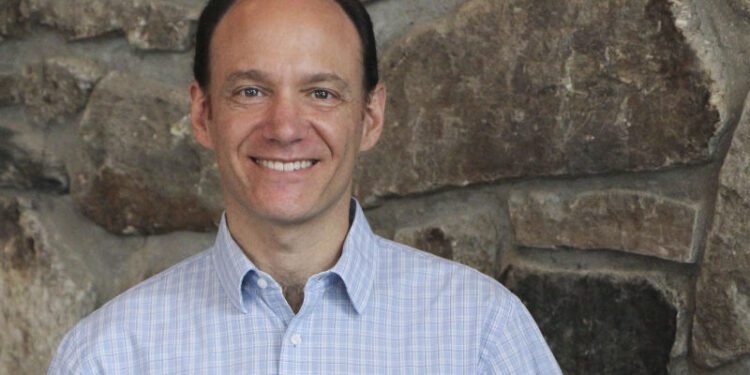Is your financial portfolio benefiting you? More importantly, is it contributing positively to the lives of others? This is the question that Brian Kaminer, the founder of Talgra—a sustainable investment consulting firm based in New York—strives to help his clients address. “Investing can coexist with your principles,” Kaminer recently stated. “Your investments can yield returns while also aligning with what truly matters to me and my family.” He aspires to expand this perspective to a broad audience.
Kaminer’s overall viewpoint is that once your fundamental needs are satisfied, the focus shifts from the quantity of your wealth to how you utilize it. Through Talgra, he enlightens others on how to synchronize their finances with their values by embracing socially responsible investing. Often referred to as impact investing, these opportunities can vary from depositing your funds in a small, local bank to financing the development of a large solar energy facility in the Chilean desert.
After earning his business degree from the University of Vermont in 1990, Kaminer joined his family’s brokerage firm. While working closely with family had its benefits, he felt restless after 17 years. “From a personal fulfillment perspective, something was lacking.”
In 2007, Kaminer departed from the family enterprise and founded Talgra. “I wasn’t entirely sure of my next steps after leaving, but I was lucky enough to have time to explore various paths. My intention was to be self-employed for the foreseeable future, and I recognized that establishing a company would be a practical avenue for that. Talgra was designed as a tool to allow me to investigate different possibilities as they unfolded.”
The initial year proved to be difficult, yet Kaminer remained dedicated to keeping his options open. One way he did this was through volunteering. (“I enjoy hands-on learning,” he mentions.) He became passionate about environmental topics and offered his service to local schools introducing sustainability into their programs, all while educating himself on subjects like renewable energy.
In the ensuing years, Kaminer engaged increasingly in sustainability consulting and invested in small solar initiatives in New Jersey. In 2010, he attended a Slow Money event, a national nonprofit advocating investments in sustainable agriculture and food systems. “I thought I was distancing myself from the financial side of investing, yet this experience redirected me back to the investment aspect of sustainability.” Kaminer had discovered his mission: advocating for the idea that investments should be deliberate and purposeful.
The idea of intentional investing, which Kaminer describes as “making financial investments with the goal of fostering social or environmental benefits,” isn’t exactly a novel concept. Socially responsible investing has existed for many years, but historically, it focused on negative screening. This approach involved excluding certain companies—those involved in alcohol, tobacco, or activities conflicting with personal ethics—from investment portfolios. Nowadays, with evolving standards and companies increasingly reporting ESG (environmental, social, and governance) metrics, investors are beginning to emphasize positive screening. They consider factors like a company’s water consumption, recycling practices, and employee diversity.
Despite the clear advantages of impactful investing, several elements inhibit its widespread acceptance. One prevalent myth is that socially responsible investing doesn’t yield comparable financial returns. Kaminer points out that multiple companies are assembling case studies to refute this belief. Another challenge is that many financial advisors lack adequate knowledge in this domain, leading them to overlook such investment options for their clients.
However, Kaminer asserts that information regarding impactful investing is readily available. The abundance of scattered resources can be overwhelming for many individuals. Thus, one of Talgra’s roles is to guide clients toward existing opportunities.
“I generally meet with clients to explain that the potential for meaningful investment impact is greater now than it was a few decades ago. This discussion often evolves into a personal dialogue where I gather insights into their values and priorities, helping them establish connections with investment opportunities aligned with their beliefs.”
Moreover, Kaminer is committed to enlightening potential investors through InvestWithValues.com, a comprehensive directory encompassing topics, resources, and organizations dedicated to driving positive social and environmental outcomes through finance, entrepreneurship, and investing.
“The directory was conceived during my exploration of these topics when I noticed that opportunities existed in disconnected segments,” Kaminer explains. “I aimed to facilitate connections among them. Initially, I documented everything as a personal reference, which evolved into a PDF I shared on the Talgra website. The response was so positive that in 2013, I transformed it into a more interactive online platform.”
The website has recently undergone significant changes, including a rebranding (previously known as the Money & Impact Investing Directory), along with refreshed design and content. “The updates are intended to create a more engaging and inclusive experience for a wider audience,” Kaminer shared prior to the launch. “It will feature a search function allowing users to look up topics. We’re also introducing a discussion forum for exchanging ideas.”
Kaminer acknowledges that while the time and effort invested in the site, described by Forbes as a “comprehensive resource for impact investors,” may detract from attracting new clients, he believes that interest will develop organically. “I felt a sense of urgency to advance the site,” he remarks. Equally important to Kaminer is ensuring that users can access information without any cost. “It’s mainly a passion project. Ultimately, I want individuals to realize the resources available to assist them, regardless of whether it’s through my platform or another.”


